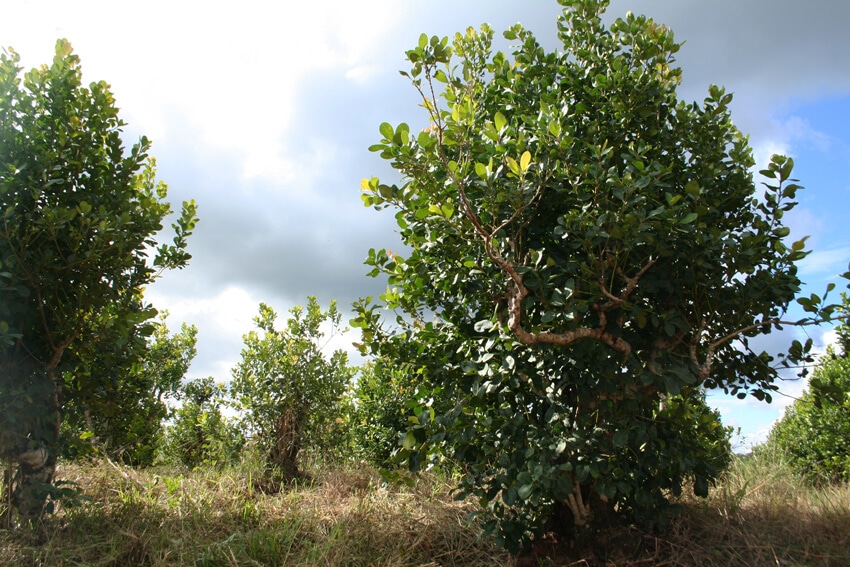Yerba Mate Article
Coffee and Mate: A Future for Yerba Mate?
Coffee shops are everywhere. Nowadays you can visit virtually any town centre in the UK and find at least one of the big chains open for business. Once confined to larger cities, multi-national coffee companies are now beginning to invade spaces at one time occupied exclusively by independent cafes and tearooms. In a land formerly dominated by tea drinking, the coffee shop has truly prevailed in the twenty-first century. The speciality tea market, however, is rapidly changing in Britain, so what is the future for yerba mate and other non-traditionally British teas and infusions?
Coffee in many ways is a unique beverage, or at least it has been since the early 1990’s. Up until then the British public were still largely a nation of instant coffee drinkers, although consumption levels were still negligible when compared to tea. The growth of filter machines and ground coffee in the 1980’s went some way to improving the country’s coffee palate, yet it was not until the final decade of the last century when images of American’s supping cappuccinos on popular TV shows such as Friends, that the demand for espresso based coffee drinks exploded.*
Espresso – a short strong coffee made by forcing water at high pressure through finely ground coffee beans using a machine – differs from other forms of coffee in that it is much more difficult to make well consistently. Not only are good quality coffee machines and grinders expensive, but there are many variables involved in pulling a consistent shot, not to mention the very separate skill of frothing milk to the desired texture. “Proper coffee” has therefore very much remained the domain of the coffee shop and the “barista”, meaning coffee has become the hot beverage of choice when out and about.

I am a great lover of independent coffee shops, especially ones that serve their product to a consistently high standard and provide comfortable and relaxed surroundings in which to drink it. As an avid drinker of yerba mate as well as coffee, I often wonder about how mate might fit into the coffee shop, and what changes the drink might need to undergo in order to break into that environment.
My feeling at this stage is it will very much depend on the development of the speciality tea market over the next few years, and how the coffee shops choose to respond to it. At this moment other hot beverages for sale in the larger coffee chains seem to feel like a sideshow to the main event, but just like coffee in Britain used to play a rather weak second-fiddle to tea, things may change in the future.

Back in August The Telegraph reported that sales of “traditional” black tea in the UK were down, whereas sales of green tea and other herbals had increased 5% in the last three years, constituting a total of 29% of the market. This rise was particularly noticeable in young people (16-34), who cited a number of reasons for making the switch, including a widespread belief that black tea contained too much caffeine to drink in the afternoon and evening, and that it was more likely to stain teeth.
As someone with experience in the health food industry, I can testify that young people are certainly being influenced by a growing perception that too much caffeine is indeed a bad thing, but equally by the more positive attributes of green and herbal teas.
Antioxidant levels in green tea, and particularly the powdered Japanese version matcha, are one of its biggest selling points. Yerba mate has also been show to contain a high level of antioxidants, and at the end of last year Vogue magazine was suggesting to its readers that mate rather than matcha might become the next big free-radical busting trend.

So how could coffee shops help kickstart a mate revolution in the UK, and is this realistic? Helen Wang writing in Forbes Magazine recently predicted that Starbucks, the most successful coffee company in the world, might hold the key to China rediscovering its famous tea culture, by making it relevant to its growing middle class. Starbucks are – amongst other things – introducing new flavour combinations by mixing traditional tea varieties with health giving and flavoursome ingredients. They are seen to be making tea exciting again, and as well as innovating, are playing on the widely held perception that taking tea daily is more healthy than frequent coffee drinking.
We know that this mentality is steadily growing in the UK, and even if the rise of “speciality teas” might not be enough to assume coffee’s mantle as the most popular beverage consumed in cafes, the market may eventually grow to the extent that the mainstream cannot neglect it any longer. Who then is better placed to take advantage of this new trend than the highly capitalised and successful coffee chains?
If yerba mate is to play a big a role in this changing landscape then it needs to demonstrate to the public a number of things, ones that we as existing mate drinkers are already well aware. Firstly, that it is a drink that can be prepared in a variety of interesting ways and consumed in different vessels. Secondly, that it can be drunk hot and cold, be blended with different herbs, spices, fruits, as well as milk. And finally, and perhaps most importantly, can be a delicious and healthier alternative to coffee.
*For this analysis I am indebted to episode 9 of the Coffee Talk Podcast

